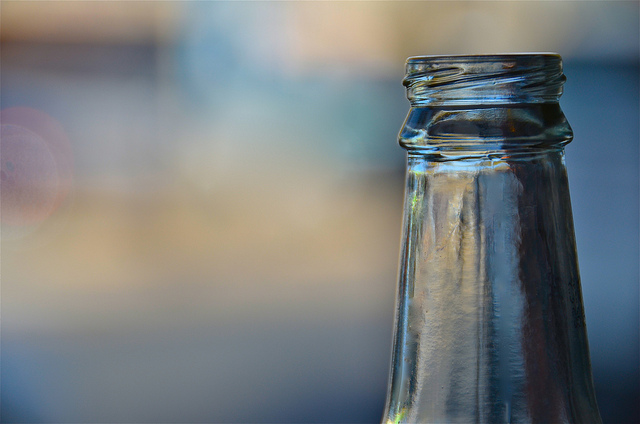For a long time, a major concern of the public health lobby’s proposed sugar-sweetened beverage tax has been that it would unfairly punish disadvantaged groups.
But research from the Global Obesity Centre and Deakin Health Economics, at Deakin University, debunks this theory. It shows that lower socioeconomic groups would in fact receive the biggest health benefits from a tax on sugary drinks, and would spend only a fraction more on these drinks per year than other groups under this system.
Our study, published in PLOS Medicine, is the first of its kind to examine the equity of a 20 per cent tax on sales of sugar-sweetened beverages in Australia, by assessing potential cost-effectiveness, health gains and financial impacts, for different socioeconomic groups.
The modelling predicts that those in Australia’s lowest socioeconomic groups would have the most health gains from the tax, and the extra cost to them due to the increased price of sugary drinks would be less than $5 more than the highest socioeconomic group per year.
The study also showed a sugar-sweetened beverage tax could save $1.73 billion in health care costs over the lifetime of the population.
Health and financial benefits
We predict that health benefits are likely to be better felt by lower socioeconomic groups as they are typically more price sensitive – so more likely to stop buying sugary drinks when prices increase. They are also the highest consumers of sugary drinks, so there is a greater scope for reduction in their consumption.
To calculate the benefits of a sugary drink tax, our research looked at predicted changes in consumption levels due to a change in price, then converted that to a change in population body mass index (BMI). This was then used to predict the reduction in the incidence of certain diseases related to obesity.
These diseases include diabetes, ischemic heart disease, stroke, hypertensive heart disease, colorectal cancer, breast cancer, endometrial cancer, kidney cancer, and osteoarthritis of the knee and hip. By increasing the risk of all these diseases, high BMI has the second highest proportion of total burden of disease in Australia at 5.5 per cent.
We found that a decrease in the purchase and consumption of sugary drinks would lead to significant health gains and a reduction in health care cost across all socioeconomic groups.
But as a percentage of household expenditure, the lower socioeconomic groups would benefit the most from lower out-of-pocket health care expenses on items like pharmaceuticals, general practitioner visits, and hospital visits that are not covered by the government.
Why target sugary drinks?
A proposed sugar tax has already ignited much public debate, but it is important that policymakers look at an evidence-based approach to address what is becoming an alarming issue in our society.
In Australia right now almost two in three adults and a quarter of all children are overweight or obese. In addition, the lowest socioeconomic group experiences rates of overweight and obesity disease burden that are 2.3 times those of the highest socioeconomic group, according to the latest report from the Australian Institute of Health and Welfare (AIHW).
We know that sugar-sweetened beverages are playing a big role in that, and something has to be done. Sugary drinks lack nutritional value and don’t provide the same feeling of fullness that solid food provides. So when we consume these drinks we tend to not reduce our intake of other foods to compensate for the extra calories.
The World Health Organisation (WHO) recommends adults consume no more than six teaspoons of added sugar per day, but the average Australian is more than doubling that amount One 330ml bottle of Coke has a whopping nine teaspoons of sugar, and teenage boys are the highest consumers of such sugary drinks, consuming an average of 400mls per day.
How much more will we be paying?
Under a proposed 20 per cent tax, we estimate the increase in annual spending on sugar-sweetened beverages would be an average of $30 per person, or just 60 cents per week, arguably a small price to pay when the health benefits are taken into account.
While those in disadvantaged areas will be paying slightly more, the difference is very small, only about $5 per year or 10c per week.
But these costs will be repaid many times over in health benefits and reduced health care costs. A 20 per cent tax on sugar-sweetened beverages would lead to substantial gains in health-adjusted life years over the population’s lifetime. For each dollar invested, the reduction in health care costs would be $17.
Of course, this tax isn’t going to solve obesity on its own, but it can be an important part of the solution. It is about making the healthy choice, the easier and more affordable choice.
Improving the relative price of healthier drink alternatives through a sugar-sweetened beverages tax is likely to make an important contribution to better nutrition for Australia’s children. This should be alongside other strategies to improve food skills and literacy, restrictions on the marketing of unhealthy food and drink to children, and creating healthy food environments across key government organisations such as schools and hospitals.
To improve the equity of this tax even further, the government revenue it raises could be used to fund initiatives benefiting those with greater disadvantage.
Annual tax revenue from the proposal was estimated at $642.9 million in our report. Dedicating a portion of this to subsidising healthy food for the most disadvantaged groups could further reduce the equity concerns about the impact of the tax on low socioeconomic groups.
This research shows for the first time that a tax on sugary drinks would improve health equity without detrimental financial effects for the lowest socioeconomic groups in Australia.
With worrying rates of obesity and dental decay in our children, now is the time to implement effective and equitable policies to improve our children’s nutrition and future health.





Pingback: Australian’s Lead the Way for Soda Tax – Social Media